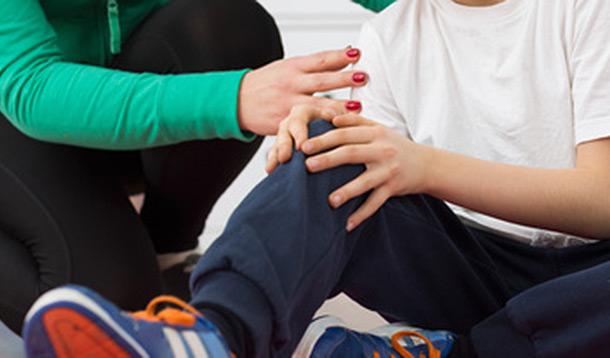
As a mom of two boys, I’m accustomed to dealing with my kids' various aches and pains. Between earaches and sore throats, trampoline bruises and bicycle wipeouts...it’s always something.
So a few years ago, when my eldest son began complaining of leg pain at night—every night for days on end—and there was no specific cause, I knew the likely culprit. Growing pains.
The term “growing pains” has the sound of an old wives’ tale. It’s something the matriarchs in your family talk about, but surely, in our modern era, isn’t a real thing... or is it?
Rest assured, growing pains are a very real thing.
That said, it’s not a well-understood syndrome, and it hasn’t received much research attention. Which suggests it’s not a big deal. But for the families who have lived through it can attest, it can be a big problem. My son has never been a great sleeper but when growing pains struck, bedtime became a nightmare.
Wondering if your kid has growing pains? Desperate to know what you can do about it? Read on.
Growing pains affect a lot of kids—between 10-20% of all children between the ages of 3 and 12 years. The peak occurrence is between ages 4-8, and it's slightly more common in girls. There also seems to be a family tendency: most children who get growing pains have a parent or sibling who also experienced the same thing.
Typically, growing pains show up as evening or night-time pain that lasts for at least three months. The pain is usually felt in the legs (and sometimes in the arms, too) and doesn’t localize to a particular joint. Older kids (ages 6-12 years) can sometimes describe it as a creeping sensation, a cramping, or a feeling of restless legs. Sometimes the pain is mild but growing pains can be bad enough to wake your child at night or disrupt daytime activities.
Growing pains are considered a diagnosis of exclusion—meaning, you need to rule out other things before confirming that the pain is due to growth. Seeing your family doctor or pediatrician is the right place to start. Your doctor will chat with you, ask some questions, examine your child, and may order additional tests.
We don’t know exactly why some kids get growing pains and some don’t. Children who struggle with growing pains don’t grow differently than those without growing pains. The symptoms can come and go, and many kids experience pain-free periods that last for weeks or months, before the pains come back.
Growing pains are not harmful. They are benign (not harmful) and usually resolve naturally within a year or two of onset, and typically before adolescence. It’s important to reassure your child that he will eventually outgrow them.
Despite their benign nature, growing pains have the potential to affect kids and their families significantly. It can mess with sleep (your kid’s and yours) and can also interfere with daytime activities. That’s why it’s good to know there are some things you can do to help alleviate your child’s pain.
1. Try using massage & applying warmth
This was the main approach we took to helping my son. To help him at night, I would rub his feet and lower legs with moisturizing lotion until he fell asleep. It seemed to do the trick for him, and although it took a few minutes (sometimes many more than a few...) it usually helped us avoid using medication.
2. Practice stretching exercises
Some small studies have shown that kids who were given a stretching routine had quicker improvement of their growing pains than kids who didn’t do any stretches. Talk to your doctor or a physiotherapist to get some leg muscle stretching recommendations.
3. Don’t stop regular activities
It’s important that you not allow the pain to interfere with your kid’s usual activities and social events. Cancelling activities does not prevent growing pains, and in fact, this approach could worsen the situation by making the pain a focus for your family.
4. Oral pain relievers
If all else fails and there is significant disruption of sleep, for a limited time, you can use an over-the-counter medication like ibuprofen or acetaminophen, for a limited time. It’s not recommended to use these beyond a few days, but they can provide enough relief to help your kid sleep through the night. Keep using all the other measures above and hang in there, knowing it will eventually pass.
My son’s growing pains lasted, off and on, for several months and then resolved. My younger son hasn’t started complaining of similar pains yet—but I won’t be surprised if he does. I’ve got the lotion and our stretching handout ready. Plus, the ice packs for bruised knees and trampoline injuries...and the bandages for the bicycle wipeouts!

This is proudly sponsored by our friends at the Centre for Pediatric Pain Research.
www.itdoesnthavetohurt.ca